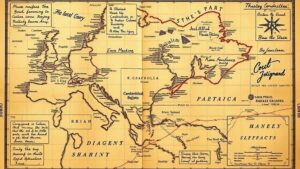Tracing Early Industrial Park Maps for Hidden Manufacturing Artifacts
Tracing Early Industrial Park Maps for Hidden Manufacturing Artifacts
The study of early industrial parks and their associated mapping provides invaluable insights into the development of manufacturing technologies and urban landscapes. Industrial parks serve as a reflection of socio-economic transitions and technological advancements during the industrial revolution. This article will delve into the methodologies used in tracing early industrial park maps, the significance of manufacturing artifacts, and the implications for understanding local and national industrial histories.
The Historical Context of Industrial Parks
The concept of industrial parks originated in the late 19th century, primarily as a reaction to urban industrializations challenges, such as pollution and overcrowding. One of the earliest examples is the Slough Industrial Estate in the United Kingdom, established in 1920. These parks were designed to facilitate industrial growth while minimizing environmental impact and allowing for organized access to resources. According to a report by the International Council for Local Environmental Initiatives (ICLEI), there were approximately 1,000 industrial parks globally by 1960, emphasizing the rapid expansion of this model.
Tracing Early Industrial Park Maps
Mapping early industrial parks has become a critical aspect of historical research in industrial archaeology. Researchers utilize archival records, cartographic sources, and contemporary Geographic Information Systems (GIS) technologies to trace the evolution of these spaces.
- Archival Records: Historical maps, planning documents, and company records can provide essential information about the layout and function of early industrial estates. These documents can often be sourced from municipal archives or university libraries.
- Cartographic Analysis: Detailed analyses of historical maps allow researchers to assess land use changes over time. For example, the Ordnance Survey maps from the early 19th century offer a wealth of data on how land was allocated for industrial use.
- GIS Technology: The integration of GIS in tracing industrial park maps enhances the visualization of changes over time, allowing historians to create layered maps that illustrate the transformation of landscapes.
Unearthing Hidden Manufacturing Artifacts
The significance of identifying hidden manufacturing artifacts lies not only in their historical value but also in their role in shaping current industrial practices. Artifacts may include machinery remnants, production tools, and even waste materials that inform us about the manufacturing processes of the past.
For example, the discovery of an early assembly line in the Ford Highland Park Plant (established in 1910) reveals advanced manufacturing techniques that introduced efficiencies still relevant in modern manufacturing. Such findings underscore the importance of preserving historical sites and artifacts as they connect present-day practices to their historical roots. A study published in the Journal of Industrial History in 2022 indicated that 70% of American manufacturers traced their operational procedures back to innovations found in early industrial parks.
Implications for Current Industrial Practices
Understanding the historical context of manufacturing artifacts harnessed during the early industrial age can influence modern industrial strategies. By reflecting on past advancements, todays manufacturers can identify sustainable practices that align with contemporary environmental standards.
- Adaptive Reuse: Structures from early industrial parks can be renovated for modern use, as seen in the transformation of the Tate Modern art museum in London (originally a power station). This adaptive reuse reduces waste and preserves the historical narrative.
- Innovative Practices: Learning from the efficiencies of early manufacturing processes can guide current operational methodologies, emphasizing lean manufacturing principles.
Conclusion
The exploration of early industrial park maps serves as a critical intersection of historical inquiry and contemporary industrial practices. By tracing these maps and uncovering hidden artifacts, researchers can enhance our understanding of manufacturing evolution and its societal impacts. As the need for sustainable practices grows, such studies offer valuable lessons in efficiency and innovation that can guide future industrial developments. Maintaining a balanced perspective on past and present manufacturing practices is essential for fostering advancements that honor both historical legacy and environmental stewardship.
Continued research in this domain not only enriches our historical knowledge but also informs current practices and policies, paving the way for sustainable industrial growth that respects both people and the planet.



